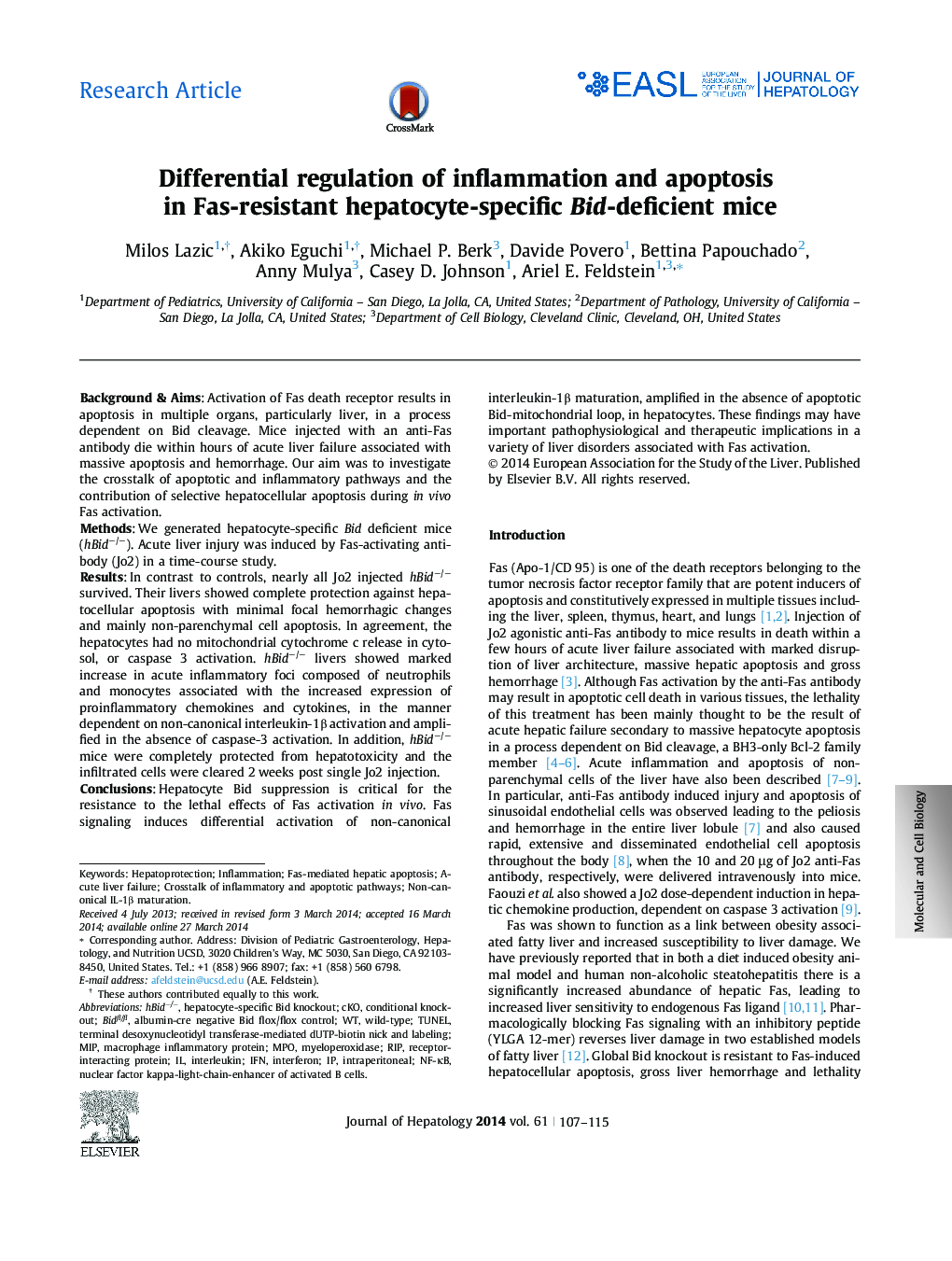| Article ID | Journal | Published Year | Pages | File Type |
|---|---|---|---|---|
| 6103106 | Journal of Hepatology | 2014 | 9 Pages |
Background & AimsActivation of Fas death receptor results in apoptosis in multiple organs, particularly liver, in a process dependent on Bid cleavage. Mice injected with an anti-Fas antibody die within hours of acute liver failure associated with massive apoptosis and hemorrhage. Our aim was to investigate the crosstalk of apoptotic and inflammatory pathways and the contribution of selective hepatocellular apoptosis during in vivo Fas activation.MethodsWe generated hepatocyte-specific Bid deficient mice (hBidâ/â). Acute liver injury was induced by Fas-activating antibody (Jo2) in a time-course study.ResultsIn contrast to controls, nearly all Jo2 injected hBidâ/â survived. Their livers showed complete protection against hepatocellular apoptosis with minimal focal hemorrhagic changes and mainly non-parenchymal cell apoptosis. In agreement, the hepatocytes had no mitochondrial cytochrome c release in cytosol, or caspase 3 activation. hBidâ/â livers showed marked increase in acute inflammatory foci composed of neutrophils and monocytes associated with the increased expression of proinflammatory chemokines and cytokines, in the manner dependent on non-canonical interleukin-1β activation and amplified in the absence of caspase-3 activation. In addition, hBidâ/â mice were completely protected from hepatotoxicity and the infiltrated cells were cleared 2 weeks post single Jo2 injection.ConclusionsHepatocyte Bid suppression is critical for the resistance to the lethal effects of Fas activation in vivo. Fas signaling induces differential activation of non-canonical interleukin-1β maturation, amplified in the absence of apoptotic Bid-mitochondrial loop, in hepatocytes. These findings may have important pathophysiological and therapeutic implications in a variety of liver disorders associated with Fas activation.
